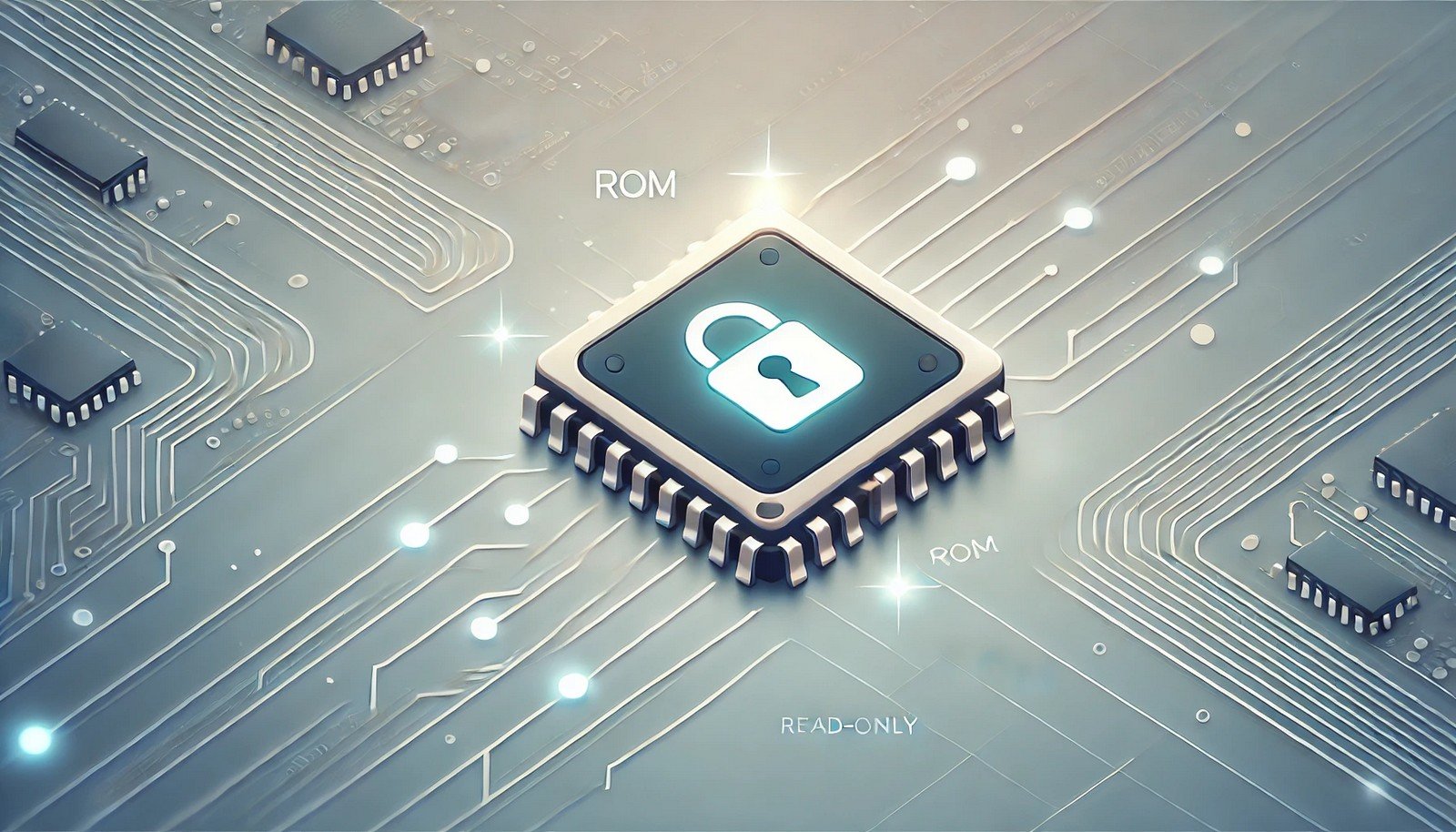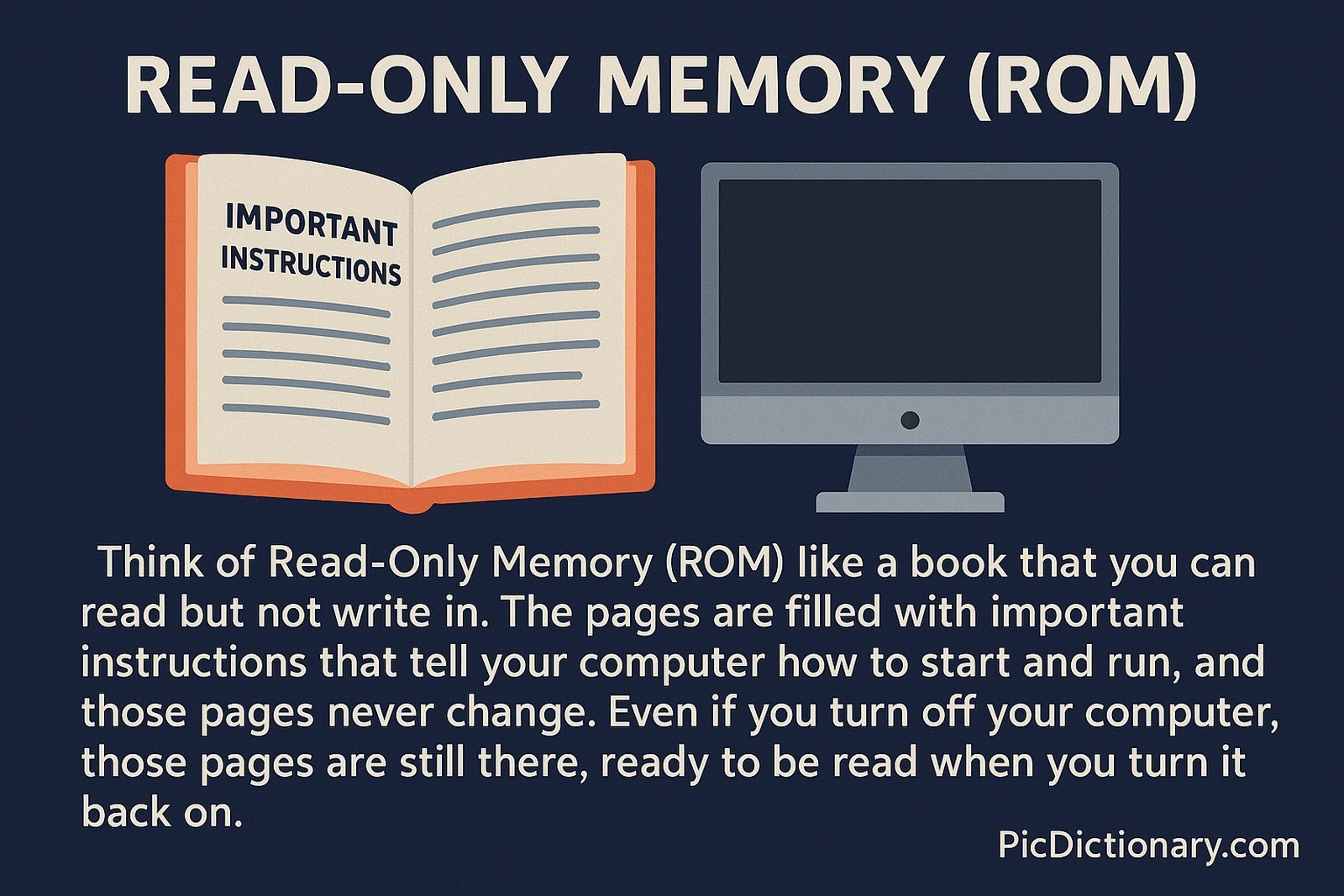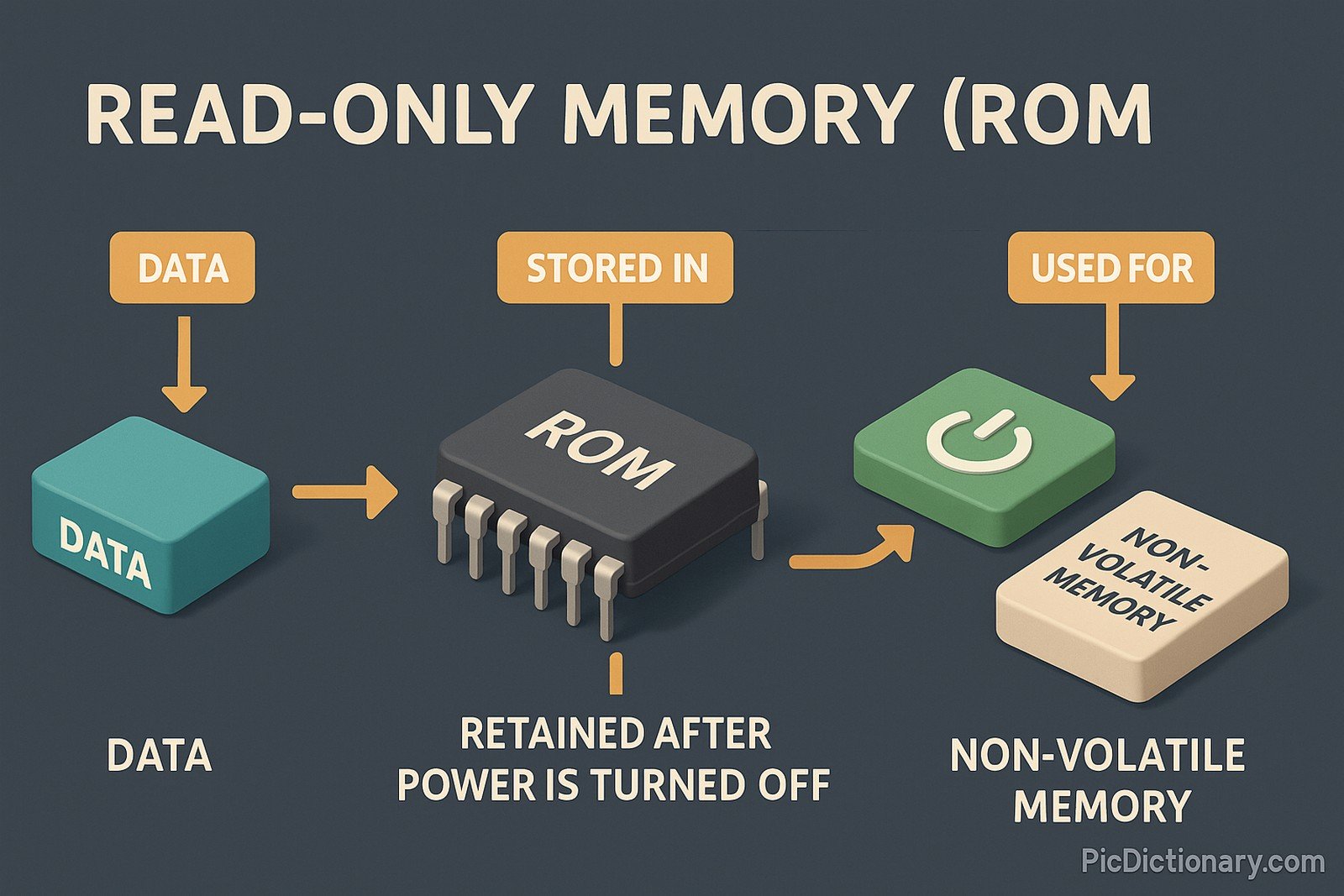Read-Only Memory (ROM)

(Representational Image | Source: Dall-E)
Quick Navigation:
- Read-Only Memory (ROM) Definition
- Read-Only Memory (ROM) Explained Easy
- Read-Only Memory (ROM) Origin
- Read-Only Memory (ROM) Etymology
- Read-Only Memory (ROM) Usage Trends
- Read-Only Memory (ROM) Usage
- Read-Only Memory (ROM) Examples in Context
- Read-Only Memory (ROM) FAQ
- Read-Only Memory (ROM) Related Words
Read-Only Memory (ROM) Definition
Read-Only Memory (ROM) is a type of non-volatile memory used in computers and other electronic devices. Data stored in ROM cannot be modified easily or at all after manufacturing, making it ideal for firmware and system-level instructions. ROM retains its data even after power is turned off, and it comes in different forms such as PROM, EPROM, and EEPROM. It is essential in storing system BIOS, embedded system instructions, and other critical functions.
Read-Only Memory (ROM) Explained Easy
Think of Read-Only Memory (ROM) like a book that you can read but not write in. The pages are filled with important instructions that tell your computer how to start and run, and those pages never change. Even if you turn off your computer, those pages are still there, ready to be read when you turn it back on.
Read-Only Memory (ROM) Origin
ROM technology originated from early computing developments in the 1950s and 1960s, where stable, permanent storage for programs was required. Early forms included diode matrices and magnetic core memory, eventually evolving into integrated circuits used widely today.
Read-Only Memory (ROM) Etymology
The term derives from the ability to only read stored data and not alter it after its creation or programming.
Read-Only Memory (ROM) Usage Trends
While early computers relied heavily on ROM for fundamental operations, modern systems use ROM for firmware and critical boot instructions. Over the years, variations like EEPROM and flash memory have allowed limited rewriting. ROM is extensively used in embedded systems, gaming consoles, and hardware controllers where data integrity is vital.
Read-Only Memory (ROM) Usage
- Formal/Technical Tagging:
- Non-Volatile Memory
- Firmware Storage
- Embedded Systems - Typical Collocations:
- "ROM chip"
- "system BIOS stored in ROM"
- "embedded ROM"
- "mask ROM"
Read-Only Memory (ROM) Examples in Context
- The BIOS in most computers is stored in Read-Only Memory (ROM).
- Game cartridges for classic consoles used ROM to store game code and graphics.
- Industrial machines use ROM to hold permanent instructions for operation.
Read-Only Memory (ROM) FAQ
- What is Read-Only Memory (ROM)?
ROM is a non-volatile memory used to store permanent instructions and data in computers and devices. - Can data in ROM be modified?
Typically, ROM cannot be modified after manufacture, though types like EEPROM allow limited rewriting. - Where is ROM used in daily life?
It’s used in computer BIOS, gaming consoles, industrial controllers, and embedded devices. - What are the types of ROM?
Types include PROM, EPROM, and EEPROM, each with varying degrees of programmability. - Why is ROM important?
ROM ensures that crucial system instructions are always available and unchangeable. - Is ROM faster than RAM?
ROM is generally slower than RAM and used for different purposes. - Does ROM lose data without power?
No, ROM retains its data even when power is off. - What’s the difference between ROM and flash memory?
Flash memory is a type of ROM that can be electronically erased and reprogrammed. - Can ROM be used for storage like a hard drive?
No, ROM is not designed for general-purpose data storage. - Are there modern alternatives to ROM?
Flash memory and SSDs are modern evolutions of ROM technologies.

Read-Only Memory (ROM) Related Words
- Categories/Topics:
- Non-Volatile Memory
- Firmware
- Embedded Systems
- Computer Hardware
Did you know?
In 1971, Intel introduced the first commercially available programmable ROM (PROM), revolutionizing how data could be permanently stored and programmed in electronic devices.
PicDictionary.com is an online dictionary in pictures. If you have questions or suggestions, please reach out to us on WhatsApp or Twitter.Authors | Arjun Vishnu | @ArjunAndVishnu

I am Vishnu. I like AI, Linux, Single Board Computers, and Cloud Computing. I create the web & video content, and I also write for popular websites.
My younger brother, Arjun handles image & video editing. Together, we run a YouTube Channel that's focused on reviewing gadgets and explaining technology.



Comments powered by CComment